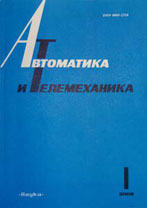|
This article is cited in 10 scientific papers (total in 10 papers)
Control in Technical Systems
Control system for an adaptive running platform for moving in virtual reality
M. N. Krasnyanskiy, A. D. Obukhov, D. L. Dedov
Tambov State Technical University, Tambov, 392000 Russia
Abstract:
We consider the problem of implementing a running platform control system for organizing a comfortable motion of a person in virtual reality with the possibility of adapting the speed of the platform depending on the nature of the user's motion; this will increase the comfort and degree of immersion in the virtual environment. The article uses a controlled running platform (implemented on the basis of a unidirectional treadmill) and a human positioning system based on virtual reality sensors (trackers), which ensures sufficient frequency and accuracy of human positioning. Software has been developed for the platform that can collect data on the user's motion and compare various control algorithms. A set of platform control functions, including those developed in the framework of this study, were formalized, compared, and evaluated. In the course of experimental studies, the optimal control functions were determined for the considered running platform. The advantages and disadvantages of each function are revealed. The scientific novelty of the study lies in the implementation of new running platform control functions to increase its adaptability to user actions by reducing the average deviation of a person from the starting position and hence the negative effects of oscillation and inertia. The practical significance lies in the improvement of the process of pairing virtual reality with devices simulating human motion (in the framework of this study, a unidirectional treadmill) and the development of appropriate software. The results obtained can be adapted to omnidirectional running platforms.
Keywords:
adaptive running platform, control system, human motion analysis, motion in virtual reality.
Citation:
M. N. Krasnyanskiy, A. D. Obukhov, D. L. Dedov, “Control system for an adaptive running platform for moving in virtual reality”, Avtomat. i Telemekh., 2022, no. 3, 69–83; Autom. Remote Control, 83:3 (2022), 355–366
Linking options:
https://www.mathnet.ru/eng/at15765 https://www.mathnet.ru/eng/at/y2022/i3/p69
|

| Statistics & downloads: |
| Abstract page: | 106 | | Full-text PDF : | 1 | | References: | 36 | | First page: | 19 |
|




 Contact us:
Contact us: Terms of Use
Terms of Use
 Registration to the website
Registration to the website Logotypes
Logotypes








 Citation in format
Citation in format 
